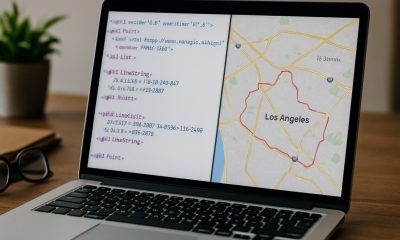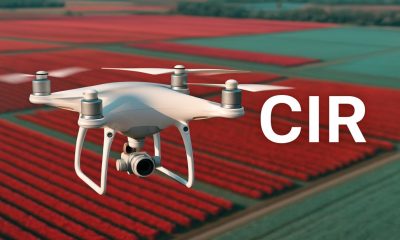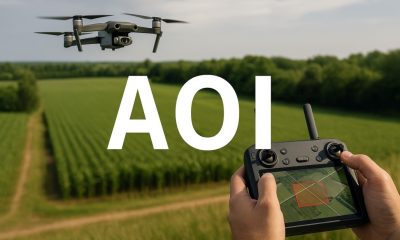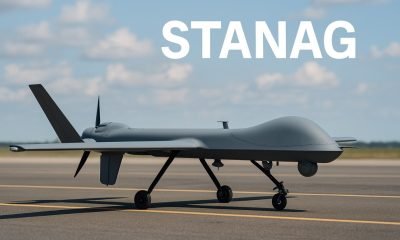- Acronym Guide
- AAM
- ABS
- AC
- ACAS
- ADS-B
- AFAC
- AGL
- AI
- AIM
- ALS
- AM
- AMA
- ANSP
- AOI
- APPI
- AUV
- AUVSI
- ARPAS-UK
- ASTM
- ATC
- BVLOS
- CAA
- CAAC
- CAB
- CASA
- CATT
- CBO
- CBR
- CBRN
- CDMA
- CDR
- CFR
- CIR
- COA
- COMINT
- CORS
- COTP
- COTR
- CPTED
- CV
- C2
- DAA
- DEM
- DFI
- DFS
- DGCA
- DHS
- DOD
- DPA
- DPEs
- DRG
- DRO
- DSM
- DSMX
- DSP
- DSSS
- DTM
- EASA
- EFT
- EO
- EOD
- EO/IR
- ELINT
- EMI
- ESC
- EVLOS
- eVTOLs
- FAA
- FCC
- FCS
- FHSS
- FICCI
- FLIR
- FOB
- FOV
- FPS
- FPV
- GBDAA
- GCP
- GCS
- GDPR
- GML
- GNSS
- GPS
- GSD
- GVC
- HDR
- HOGE
- IACRA
- ICAO
- ICS
- IMU
- INS
- IR
- ISA
- ISR
- ITU
- JARUS
- LAAMS
- LAANC
- LAATM
- LAI
- LBA
- LIDAR
- LOS
- LSALT
- MAC
- MAVLink
- MLIT
- MMS
- MSL
- MTOM
- NDAA
- NCSL
- NFZ
- NIST
- NMEA
- NOTAM
- NPA
- NPRM
- NTIA
- OBIA
- OEM
- OFDM
- OOP
- PASM
- PAV
- PCV
- PdM
- PEC
- PIC
- PID
- PIPL
- PLD
- PM
- PN
- PPK
- PPS
- PSM
- PWM
- UAM
- UAOP
- UAS
- UASTM
- UAV
- UCAVs
- UHD
- UHF
- USV
- UTM
- RAIM
- RCC
- RCS
- RFI
- ReOC
- RePL
- RMS
- ROI
- RPAS
- RPC
- RTH
- RTK
- SaR
- SAR
- SARP
- SBAS
- S.Bus
- SBIR
- SEDENA
- SfM
- SFOC
- SIGINT
- SLAM
- SMS
- SORA
- STANAG
- STTR
- sUAS
- TCAS
- TCCA
- TFR
- TIN
- TOF
- TP
- TPS
- TSA
- VHF
- VLOS
- VTOL
Drone Acronyms
What is AI (Artificial Intelligence) & How Does it Work?
By
Jacob StonerTable Of Contents

Definition
AI, or Artificial Intelligence, refers to the development of computer systems capable of performing tasks that typically require human intelligence. These tasks include problem-solving, learning, decision-making, language understanding, and visual perception. In drones, Artificial Intelligence systems analyze real-time data, adapt to environmental changes, and make autonomous decisions based on their programming and learned experiences.
Usage
Artificial Intelligence is used in drones for automated flight planning, object detection, real-time obstacle avoidance, precision agriculture, search and rescue, surveillance, and data processing. AI enhances onboard systems by reducing the need for human control and enabling the drone to interpret surroundings and react accordingly.
Relevance to the Industry
Artificial Intelligence is revolutionizing the drone industry by enabling smarter, safer, and more efficient operations. It empowers drones to execute complex tasks such as real-time mapping, autonomous inspections, and disaster response with minimal human intervention. Artificial Intelligence is also essential in processing the vast amounts of data drones collect, converting raw footage into actionable insights across industries like energy, construction, security, and environmental monitoring.
How Does AI (Artificial Intelligence) Work?
Artificial Intelligence in drones functions through the integration of advanced algorithms, sensor data, and machine learning models that collectively allow the drone to perceive, interpret, and react to its environment. Here’s a breakdown of how Artificial Intelligence works in drone systems:
Data Collection
Drones are equipped with cameras, LiDAR, thermal sensors, GPS, and other onboard tools to gather environmental data during flight. These inputs provide a continuous stream of visual, spatial, and geolocation information.Perception Layer (Computer Vision & Sensor Fusion)
AI systems use computer vision and sensor fusion to interpret the drone’s surroundings. For example, a drone may detect a vehicle, building, or person by analyzing imagery in real-time. Sensor fusion combines data from multiple sources to improve accuracy and reliability.Machine Learning Algorithms
Machine learning models—trained on thousands or millions of data samples—allow drones to recognize patterns, objects, or changes in the environment. These models are either pre-trained (offline) or updated dynamically (online learning) during drone operations.Decision-Making and Control
Once the AI interprets the environment, it uses logic or neural network-based rules to make decisions. For instance, if an obstacle is detected, the AI decides whether to reroute, stop, or ascend. In mission-based tasks like mapping or inspection, AI can adjust the flight path to gather better data or respond to changes.Task Execution and Feedback
Based on AI decisions, the drone executes actions—like changing direction, taking a photo, or alerting operators. AI systems often include a feedback loop, using new observations to refine their models and improve future performance.
This combination of perception, learning, and autonomous decision-making makes Artificial Intelligence an essential driver in pushing drones from remote-controlled tools to fully autonomous aerial systems capable of handling complex missions with minimal human input.
Example in Use
“The drone used AI-powered object recognition to identify damaged power lines during its autonomous inspection route.”
Frequently Asked Questions about AI (Artificial Intelligence)
How does AI work in drones?
Answer:
Artificial Intelligence in drones typically involves machine learning models trained on vast datasets.
These models are integrated with onboard cameras, LiDAR, and GPS to interpret environmental data.
The AI makes decisions such as navigating obstacles, identifying targets, or adjusting flight paths based on real-time analysis.
What are common AI applications in drone technology?
Answer:
Object and pattern recognition (e.g., detecting cracks in solar panels).
Automated flight path adjustments in response to obstacles or weather.
Precision agriculture through AI-driven NDVI analysis for crop health.
Search and rescue missions using thermal imaging and AI pattern detection.
What are the advantages of using AI in drones?
Answer:
Autonomy: Reduces the need for constant manual control.
Efficiency: Enhances data collection, processing, and decision-making speed.
Accuracy: AI algorithms improve precision in mapping, inspections, and monitoring.
Scalability: Enables drones to handle large or complex missions with minimal oversight.
For examples of these acronyms visit our Industries page.
As the CEO of Flyeye.io, Jacob Stoner spearheads the company's operations with his extensive expertise in the drone industry. He is a licensed commercial drone operator in Canada, where he frequently conducts drone inspections. Jacob is a highly respected figure within his local drone community, where he indulges his passion for videography during his leisure time. Above all, Jacob's keen interest lies in the potential societal impact of drone technology advancements.











